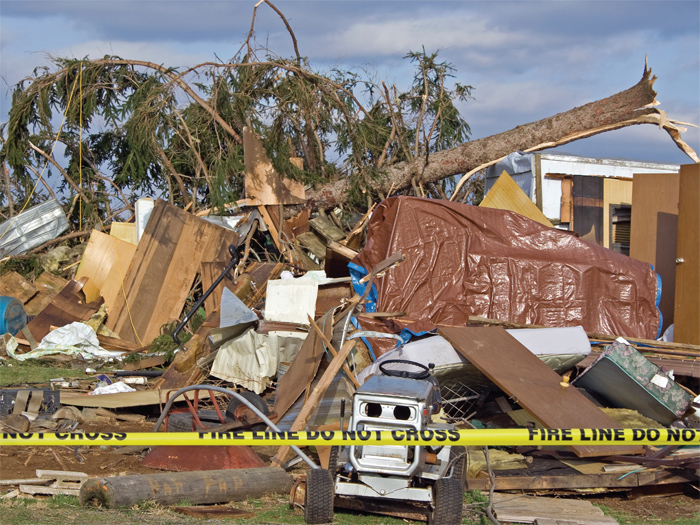Financial Impact of Extreme Weather Highlights the Need for Risk Mitigation

As catastrophic weather continues to impact most regions across the U.S., business leaders see natural disasters as a top concern – making resilience planning essential to limit disruption and loss.
In 2024, global economic losses from natural disasters were estimated to reach at least $368 billion, significantly exceeding the 21st-century average of $324 billion and the median of $329 billion, on a price-inflated basis.
A study for The Hartford’s 2025 Risk Monitor report found that 44% of businesses ranked natural disasters as their primary worry and 37% cited extreme weather as a factor.
Extreme weather events in early 2025 have only amplified those worries.
January’s greater Los Angeles wildfires are now set to be one of the costliest disasters in the city’s history, and by March, more than 100 tornadoes had swept across the central, southern and eastern U.S.
As weather becomes a growing concern, businesses will need to shift from response to resilience planning. Insurers that have a mindset for mitigating risk and who have a deep expertise in catastrophe perils, data and risk engineering strategies can help.
A Mitigation-First Approach for Extreme Weather Risk
Nearly two-thirds of business leaders (59%) say they are increasingly concerned about business interruptions, where weather typically plays a serious role, according to The Hartford’s study.
Continual disaster planning can make the difference between a short-term business disruption and business closure as weather events worsen around the globe.
Identifying and addressing potential risks before disaster strikes, a process known as a mitigation-first approach to extreme weather, can help companies to prepare for risks:
- Make consistent updates to employee safety procedures and all business continuity plans.
- Make structural improvements for safety, which could help to enhance resilience and potentially manage costs, including insurance. These can include storm-resistant construction features, flood barriers, offsite digital record storage and backup power sources.
- Create or enhance future safety, facility and technology strategies to keep workers, processes, facilities and digital assets protected as the company grows.
- Develop more resilient supply chains to prevent operational, production and shipping breakdowns and delays.
- Permanently automate and offsite all payroll, human resources and other data-related functions so key business processes are always in a state of readiness.
Powering Resilience Enterprise-Wide with Data
Insurers that leverage high-quality data based on claims and other internal sources can accurately assess weather risks, identify potential hazards and prioritize measures for adapting. This approach not only helps to mitigate the impacts of natural disasters but also supports the business’ overall resiliency.
Data from claims, operations and other sources can help to create:
- Comprehensive risk assessments that regularly evaluate exposure to weather-related events and enable business leaders to refine their risk mitigation plans
- Resilient infrastructure investments that strengthen facilities, supply chains and operational plans to withstand extreme weather.
- Data-driven insurance partnerships with carriers who leverage their advanced modeling and industry expertise to provide tailored risk solutions.
- Advanced business continuity and emergency strategies to deliver robust response plans that minimize disruption and ensure employee safety.
Balancing Risk Mitigation and Adequate Coverage
Risk mitigation helps companies navigate extreme weather emergencies while influencing and strengthening their resiliency strategies.
However, losses can still occur, which is why risk mitigation and insurance planning should be viewed holistically as part of any companywide risk management plan. Business leaders should choose an experienced carrier who understands the full range of exposures arising from catastrophe perils, including named storms, earthquakes, floods, severe convective storms, wildfires and winter storms or freeze events.
A trusted insurance partner can also help companies ensure adequate insured limits and coverage valuation for structures, equipment, machinery and business interruption. &












